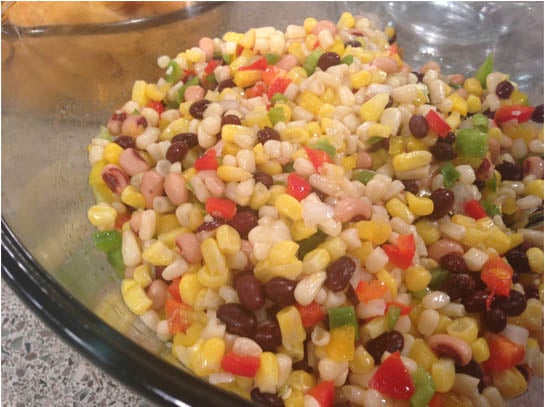How to Select Bell Peppers
- When shopping, search for brightly colored peppers with a firm skin that yields to slight pressure- skin will shine!
- Make sure the stems of the bell pepper are green in color.
- The peppers will be heavy for their size.
- Avoid peppers with bruises, soft spots, or shriveled skin.
When are Bell Peppers in Season?
Bell peppers are in season from July to September, making for delicious summer salads, barbecue dishes, and more! However, while you can get them year-round, bell peppers are best in the late summer and early fall months.
So if you want colorful, flavorful bell peppers to add to your favorite dishes (or let them be the star of dinner!), be on the lookout for fresh peppers during these months!
Varieties of Bell Peppers
Red bell peppers are one of the sweetest varieties, often called the King of the Grill. They go through the full ripening process, allowing their natural sugars to develop into their signature sweet flavor. As a result, red bell peppers are highly versatile — you can use them in pasta, salads, and even smoothies!
Yellow bell peppers are also quite sweet and have a high nutritional content. They’re packed with vitamin C, folate, and niacin, and their thick skin makes them perfect for tossing on the grill or roasting in the oven. Yellow bell peppers pair well with apple, lime, and ginger, or add them to any casserole or pasta dish.
Orange bell peppers have a tangier, fruitier taste than green peppers but are similar to red and yellow. They’re a great source of antioxidants, fiber, folic acid, and iron. Orange bell peppers aren’t quite as suited for the grill — their skin is slightly thinner — but make for great additions to salads, dips, dressings, and sauces.
Green bell peppers are picked earlier than all the other varieties; they don’t receive all the natural sugars that red, yellow, and orange peppers do, resulting in a more tangy, bitter taste. This bitterness gives them their earthy flavor and refreshing, crisp profile. You can eat them raw or pair them with any tomato-based recipe!
Bell Pepper Nutrition Facts & Benefits
Bell peppers are highly nutritious and versatile. They contain:
- Approximately 37 calories
- 0 grams of fat
- 1 gram of protein
- 7 grams of carbohydrates
- 5 grams of sugar
- 2 grams of fiber
Some of the many health benefits of bell peppers include:
- Green bell peppers are a fantastic source of fiber, which is essential for your gut health.
- Bell peppers have phenolic compounds, vitamin C, carotenoids, and flavonoids, all of which promote better health.
Bell peppers contain lots of lutein that helps protect your eyes and promote their health.
How to Store Bell Peppers
- Place bell peppers in a plastic bag in the refrigerator- will last 5 to 7 days!
- Add a damp paper towel to the vegetable compartment- helps the pepper to retain its water.
How to Prepare Bell Peppers
There are infinite ways to prepare and eat bell peppers — here are some of our favorites!
You can stuff them with anything — meat, potatoes, cheese, other vegetables, or a combination of different ingredients.
You can also grill your bell peppers, giving them a rich, smoky flavor. They cook quickly on the grill and go great by themselves or in any side dish.
If you love stir fries, you might want to try sautéed bell peppers — not only are they a must-have ingredient, but they add an unmatched sweetness when sautéed and incredible color to any dish.
Surprisingly, sweet bell peppers also go great with baked goods, like cookies, brownies, and muffins!
In addition, you can use bell peppers in soups, hummus, sauces, smoothies, and spice rubs.
How to Serve Bell Peppers
Recipes
Tomato Salsa
Recipes
Bell Pepper Salad
Recipes
Caponata
Recipes
Strawberry Smorrebrod
Recipes
Olives with Peppers
Recipes
Mango Salsa
Recipes
Snow Pea Stir-Fry
Party Trays
Mother’s Day Vegetable Bouquet
Cinco de Mayo















